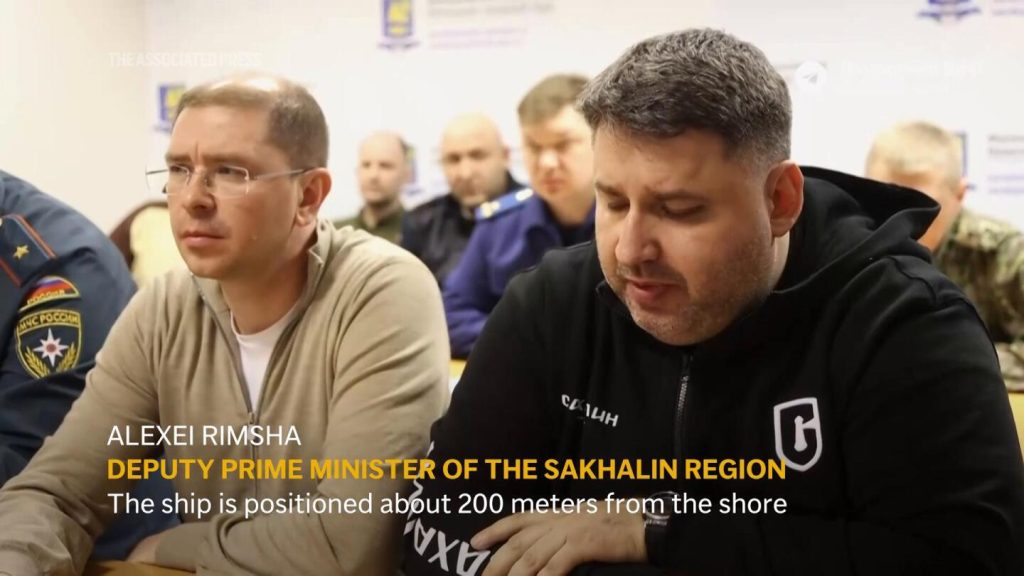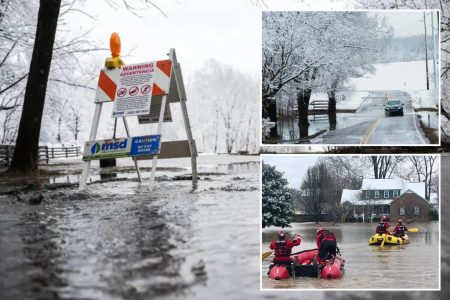1. Emergency Declared in Sakhalin After Chinese Cargo Ship Runs Aground
An emergency has been declared in Russia’s Pacific island region of Sakhalin after a Chinese cargo ship, the An Yang 2, ran aground off its southwest coast. The incident occurred in shallow waters near the Nevelsky district, approximately 200 meters (650 feet) offshore. Authorities have confirmed that the ship, which is carrying coal and heavy fuel oil, poses no immediate danger to its crew of 20 members. Governor Valery Limarenko of Sakhalin announced the emergency in a Telegram post on Sunday, emphasizing that while no fuel spillage has been recorded so far, local authorities are preparing for all possible scenarios, including the potential for environmental damage.
2. Weather Complicates Rescue and Assistance Efforts
Bad weather has hindered attempts by rescue teams to access the stranded vessel. The An Yang 2 remains in a precarious position, and regional authorities are working on plans to pump fuel out of the damaged ship to minimize the risk of a spill. The challenging weather conditions have added layers of complexity to the operation, making it difficult to predict when the situation might be fully resolved. Despite these challenges, officials have assured the public that all necessary precautions are being taken to ensure the safety of both the crew and the surrounding environment.
3. Sakhalin Region: A Strategic and Disputed Territory
The Sakhalin region, located in Russia’s Far East, is a strategic and resource-rich area that has long been a focal point of regional and international attention. The region comprises the large island of Sakhalin and the four Kuril Islands, which have been the subject of a decades-long territorial dispute between Russia and Japan. The Kuril Islands, known as the Northern Territories in Japan, were captured by Soviet troops at the end of World War II, and control of them has remained with Russia ever since. This unresolved dispute has prevented Russia and Japan from signing a formal peace treaty, underscoring the region’s sensitive geopolitical significance.
4. Preparing for Potential Environmental Impact
While the immediate danger to the crew has been ruled out, the grounding of the An Yang 2 has raised concerns about potential environmental consequences. The ship is carrying heavy fuel oil, which, if spilled, could have devastating effects on the marine ecosystem in the waters off Sakhalin. Local authorities are taking proactive measures to prevent such an outcome, including preparing to pump fuel out of the damaged vessel. The situation has drawn parallels to a similar incident earlier this year, in which hundreds of volunteers in southwestern Russia worked tirelessly for weeks to contain a massive fuel oil spill from two storm-damaged tankers in the Kerch Strait near Crimea.
5. Historical Context: Sakhalin and Its Strategic Importance
Sakhalin’s strategic and economic importance has made it a focal point of regional and international interest for centuries. The region is rich in natural resources, including oil, gas, and fisheries, making it a vital contributor to Russia’s economy. However, its location in the Pacific and its proximity to key shipping lanes also make it vulnerable to maritime accidents and environmental disasters. The grounding of the An Yang 2 serves as a stark reminder of the risks associated with maritime trade and the importance of robust safety measures and emergency response systems.
6. Lessons and Moving Forward
The incident involving the An Yang 2 underscores the need for heightened vigilance and preparedness in addressing maritime emergencies, particularly in sensitive and strategic regions like Sakhalin. While the situation has been brought under control for now, it serves as a wake-up call for governments, shipping companies, and environmental organizations to work together to mitigate the risks of accidents and ensure the protection of fragile ecosystems. As authorities in Sakhalin continue to monitor the situation and prepare for potential outcomes, the region remains a critical focal point in the balance between economic development and environmental preservation.












